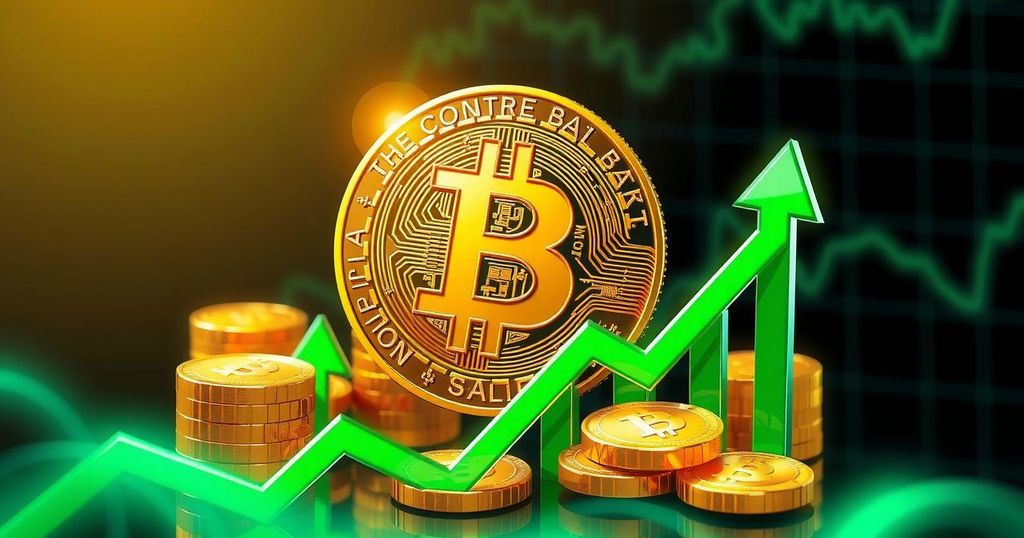Bitcoin Price Surge: Factors Behind Today’s 12% Increase Amid Stock Decline
Bitcoin’s price has increased by 11.7% this week, contrasting the decline in U.S. stocks. Key factors include fears of tariff tensions, a weakening dollar, and a notable correlation with gold. Investors appear to view Bitcoin increasingly as a safe-haven asset amid market uncertainty.
Bitcoin’s price has surged 11.7% over the past week, currently sitting at $93,481.39, despite a downturn in U.S. stocks. The recent rally, marked by a 5.9% increase in the last 24 hours, positions Bitcoin as a potential safe-haven asset amid escalating tariff tensions and a declining dollar. This trend raises questions about Bitcoin’s relationship with traditional financial markets.
Since April 19, Bitcoin’s price has risen by 10.7%, while the S&P 500 and Nasdaq 100 have experienced declines of 5.25% and 4.27%, respectively. This divergence indicates a potential decoupling of Bitcoin from traditional equities, evidenced by its 30-day correlation coefficient with the S&P 500 presently at 0.65, suggesting a partial break from conventional market behaviour.
U.S. Treasury Secretary Scott Bessent’s remarks about the unsustainability of the current tariff standoff with China have boosted market sentiment, encouraging risk-taking among investors and fuelling Bitcoin’s recent rally. His statements suggest a shift towards viewing Bitcoin more favourably in the context of risk assets.
Additionally, the U.S. Dollar Index (DXY) has decreased by 4.81% this month, in part due to President Trump’s pressure on the Federal Reserve to lower interest rates. A weaker dollar enhances Bitcoin’s attractiveness as a store of value, contributing to its nearly 9.93% surge since April 21.
Notably, Bitcoin has shown an increasing correlation with gold. Since April 9, gold’s price has risen by 11.37%, mirroring Bitcoin’s ascent. This parallel trend underscores Bitcoin’s emerging role as a hedge against economic and geopolitical instability, reflecting a shift in investor behaviour during turbulent times.




Post Comment